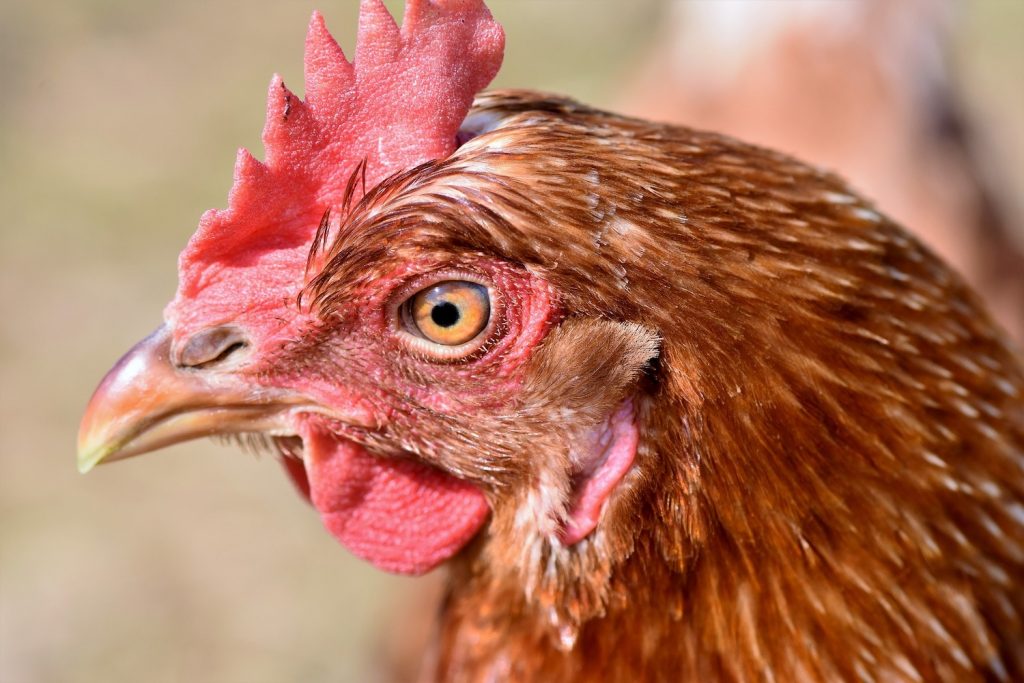Poultry at high risk of heat stress, experts warn
10th July 2020
Britain’s widely variable and unpredictable summer temperatures can put poultry units at high risk of heat stress, warns NFU Mutual Risk Management Services.
Britain’s widely variable and unpredictable summer temperatures can put poultry units at high risk of heat stress, warns NFU Mutual Risk Management Services.
The company provides advice on safety, loss prevention and bio-security to poultry businesses.
“Our changeable climate means temperatures can vary widely from day to day during the summer months – and sudden spikes can very quickly lead to heat stress in units where cooling equipment is not maintained rigorously or staff aren’t trained to spot the signs of stress and react quickly,” says managing director Ian Jewitt.
“All types of poultry can be affected by heat stress – but the birds most at risk are meat birds that are towards the end of their crop cycle. To minimise the risk of heat stress losses, cooling equipment and controls must be maintained and checked rigorously and management systems put in place and tested to ensure a quick response if things start to go wrong.”
NFU Mutual offers a poultry heat stress prevention checklist:
- Stocking density: Ensure stocking density does not exceed Defra guidelines, or those of your assurance scheme. It is good practice to reduce the stocking density further below the guidelines in the summer months.
- Ventilation: Ensure the recommended maximum ventilation rates are achieved to avoid overheating and reduce excess moisture. Tunnel ventilation can be useful in achieving this or consider the addition of extra fans in the gable end or internal circulation fans. Consider running ventilation overnight at or near maximum in times of prolonged hot weather to ensure maximum benefit for the following day.
- Planned preventative maintenance: Ensure planned preventative maintenance and testing is undertaken to avoid the risk of mechanical /electrical breakdowns.
- Competent staff: It is critical that poultry staff are fully trained and able to recognise early signs of heat stress. There should be written instructions on how to deal with hot weather emergencies. Ensure contingency plans are up to date and contains correct phone numbers.
- Surveillance and monitoring: Staff should check the birds more frequently in hot weather but be careful not to disturb them unduly. You may also consider hi-tech monitoring systems which can measure a range of factors including temperature, and can remotely warn you about heat stress.
- Avoid delay: Consider temporary on-site accommodation for designated staff during periods identified as being at increased risk to reduce any delay in completing any time-critical interventions.
- Misting systems: The use of external or internal misting systems (except where the weather is humid).
- Environmental alarms: Test the environmental alarm on a weekly basis to ensure it is fully operational and that all audible alarms can be heard on site or at the point of any temporary staff accommodation facilities. Ensure the system is serviced annually by a suitably qualified engineer with a test log retained. The environmental alarm should also give a warning remotely to nominated staff by use of an auto-dialler or preferably to an approved alarm receiving centre. Ensure the phone numbers provided are up to date and reflect changes to staff / staff circumstances (e.g. Covid-19 self-isolation) and in the correct first call sequence. A programme of testing, servicing, checking and maintenance in accordance with the installer’s recommendations needs to be in place and documented.
- Manual back up alarm: Further consideration should be given towards installation of a separate manual temperature variation alarm to ensure that you are aware of an alarm situation in the event of a failure within the main control panel.
- Back-up generator: Ensure that you have an available backup generator with enough capacity to power the whole installation. It is essential that the backup generator plant is subject to weekly testing for 15 minutes at a time and is tested under full load at least every three months for a 30 minutes duration. Test logs should be retained. Generators with an automatic cut-in facility and heated engine with batteries on trickle charge are recommended. If you have a fuel powered generator ensure that there is enough fuel available on-site to run and provide adequate time for additional fuel to be obtained for any protracted breakdowns. You may wish to consider use of a fuel polishing system to reduce the risk of generator failure. Ideally the generator should be in a detached location/building a minimum of 7m (but wherever possible 10m) from the main power intake.
More information on poultry insurance and risk management is available on www.nfumutual.co.uk

